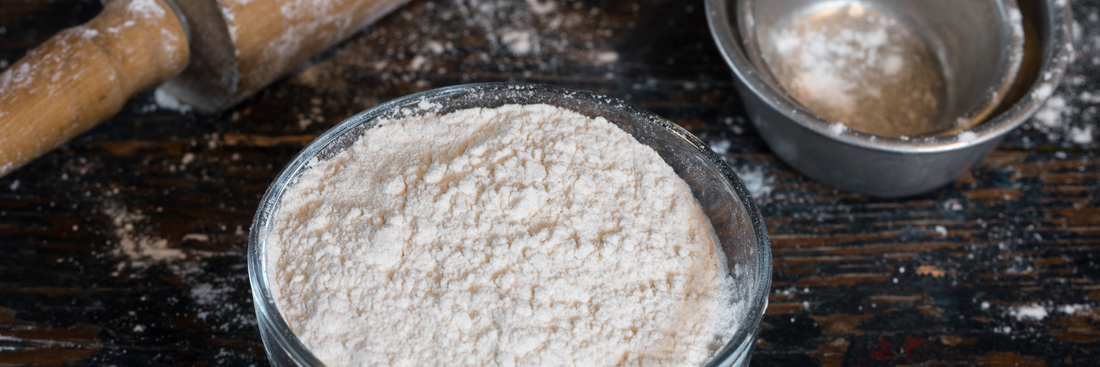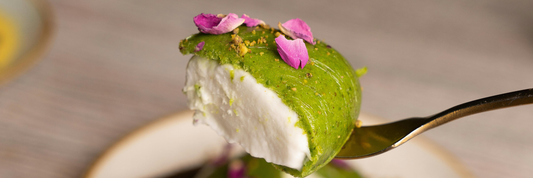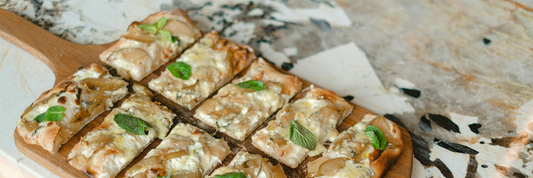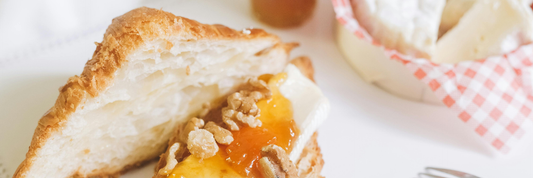Flour is one of the most essential ingredients in kitchens worldwide, used in everything from bread and pancakes to pastries and sauces. But if you’re tracking your calorie intake or following a specific diet, you might be wondering: How many calories are in flour?
In this comprehensive guide, we’ll explore flour calories per 100 grams, per cup, and per tablespoon, compare the calorie content of different types of flour, and help you choose the right flour for your health and weight goals.
-
Types of Flour: A Complete Guide for Professional Bakers and Pastry Chefs
-
Is Flour Healthy? A Complete Guide to Flour Nutrition, Benefits, and Health Risks
What Are Flour Calories?

“Flour calories” refer to the amount of energy provided by flour, mainly derived from carbohydrates. Since most types of flour are made by grinding grains, nuts, or legumes, their calorie content varies depending on their composition particularly their carbohydrate, fat, and fiber levels.
On average:
- All-purpose flour: about 364 calories per 100 grams
- Whole wheat flour: about 332 calories per 100 grams
- 1 cup of flour (125g): around 455 calories
- 1 tablespoon of flour (8g): approximately 28 calories
The way you measure flour significantly affects the calorie count. Scooping flour tightly packs it, increasing weight and calories, while spooning it lightly into a cup gives a lower number.
Flour Calories by Serving Size
| Serving Size | All-Purpose Flour | Whole Wheat Flour | Almond Flour | Coconut Flour |
|---|---|---|---|---|
| Per 100g | 364 kcal | 332 kcal | 580 kcal | 400 kcal |
| Per Cup (125g) | 455 kcal | 415 kcal | 725 kcal | 480 kcal |
| Per Tablespoon (8g) | 28 kcal | 26 kcal | 46 kcal | 32 kcal |
These values are based on USDA and Nutritionix data. As shown, almond flour contains the most calories because of its healthy fat content, while whole wheat and coconut flour tend to be lighter.
Calories in Different Types of Flour

All-Purpose Flour Calories
All-purpose flour contains around 364 calories per 100 grams or about 455 calories per cup.
It is made by refining wheat to remove the bran and germ, leaving a fine, versatile flour commonly used in cakes, cookies, and bread. However, because of its low fiber content, it digests quickly and can cause blood sugar spikes.
Whole Wheat Flour Calories
Whole wheat flour has about 332 calories per 100 grams or roughly 410 calories per cup.
It includes all parts of the wheat kernel, making it higher in fiber, vitamins, and minerals. Though the calorie difference between white and whole wheat flour is small, the nutritional benefits of whole grains make it the healthier choice.
Bread Flour Calories
Bread flour averages 365 calories per 100 grams.
It has a higher protein content (12–14%) compared to all-purpose flour, giving baked goods more structure and chewiness. The calorie count is similar, but the additional protein can help improve satiety.
Cake Flour Calories
Cake flour contains approximately 357 calories per 100 grams.
It’s finely milled with less protein and more starch, creating soft and tender textures in cakes and pastries. Although it has slightly fewer calories, it’s often used in smaller quantities.
Self-Rising Flour Calories
Self-rising flour has around 360 calories per 100 grams.
It’s essentially all-purpose flour with baking powder and salt added. The calorie content remains nearly identical to plain flour since the leavening agents contribute negligible energy.
Gluten-Free and Alternative Flours
| Flour Type | Calories (Per 100g) | Main Nutrient Highlights |
|---|---|---|
| Almond Flour | 580 kcal | Rich in healthy fats and vitamin E |
| Coconut Flour | 400 kcal | High in fiber, low in net carbs |
| Oat Flour | 389 kcal | Good source of beta-glucan fiber |
| Chickpea Flour | 387 kcal | High in protein and gluten-free |
| Rice Flour | 366 kcal | Light texture, gluten-free option |
| Buckwheat Flour | 343 kcal | High in magnesium and antioxidants |
How to Calculate Flour Calories

If you know how much flour a recipe uses, you can easily calculate its calorie content.
For example, 1 cup of all-purpose flour weighs around 125 grams.
Calculation example:
125 g × (364 kcal ÷ 100 g) = 455 kcal per cup
If a recipe uses 2 cups of flour, that’s roughly 910 calories from flour alone. Once you add butter, sugar, or oil, the total calorie count of baked goods can rise quickly.
Is Flour High in Calories?
Yes, flour is calorie-dense.
Most types of flour contain between 330 and 580 calories per 100 grams, depending on their composition. While refined flours (like white flour) are mostly carbohydrates, whole-grain or nut-based flours contain additional fats or proteins that alter their calorie content.
To reduce calorie intake, focus on portion size and use flours rich in fiber or protein to feel fuller for longer.
Best Low-Calorie Flour Alternatives
If you want to lower your calorie intake without sacrificing texture or flavor, consider these alternatives:
- Coconut flour: Lower in net carbs, high in fiber, ideal for gluten-free baking.
- Oat flour: Moderate in calories, provides protein and smooth texture.
- Chickpea flour: Naturally gluten-free, rich in plant protein.
- Cauliflower flour or vegetable-based flour: Very low in calories and suitable for savory recipes.
For best results, replace only 25–30% of regular flour in recipes with these alternatives to maintain structure and taste.
Do Calories Change After Baking?
The calorie content of flour does not change during baking or cooking. However, the water content decreases, meaning baked goods become more calorie-dense per gram.
For example, a slice of bread weighs less than the raw dough but contains the same total calories it’s just more concentrated.

Flour Calories and Weight Loss
If you’re watching your calorie intake, flour can fit into your diet when used mindfully.
Here are some tips:
- Choose whole grain or high-protein flours to feel full longer.
- Measure accurately spoon and level your flour rather than scooping it.
- Track total calories for the entire recipe, not just the flour.
- Combine different flours (for example, 50% whole wheat + 50% oat) to reduce overall calories while improving nutrition.
Frequently Asked Questions (FAQs)
How many calories are in 1 cup of flour?
About 455 calories per cup for all-purpose flour (125g).
How many calories are in 100 grams of flour?
Approximately 364 calories per 100g for white flour and 332 kcal for whole wheat flour.
How many calories are in 1 tablespoon of flour?
Roughly 28 calories per tablespoon.
Which flour has the fewest calories?
Coconut flour and chickpea flour have the lowest calorie counts among common types.
Does whole wheat flour have fewer calories than white flour?
Yes, slightly fewer about 30 kcal less per 100 grams but with much higher fiber and nutrient content.
Do flour calories change after baking?
No. Baking reduces moisture but does not affect total calorie content.
Conclusion
Flour is an important ingredient in nearly every cuisine, but it’s also a concentrated source of calories. Understanding flour calories per 100g, per cup, and per tablespoon can help you make smarter dietary choices, especially when baking or cooking at home.
Whether you choose all-purpose, whole wheat, or a gluten-free alternative, the key to healthy eating lies in accurate measurement and moderation. With mindful use, flour can remain part of a balanced and nutritious diet.







